Anolis carolinensis
—
Green Anole
Also known as:
Carolina Anole, American Chameleon
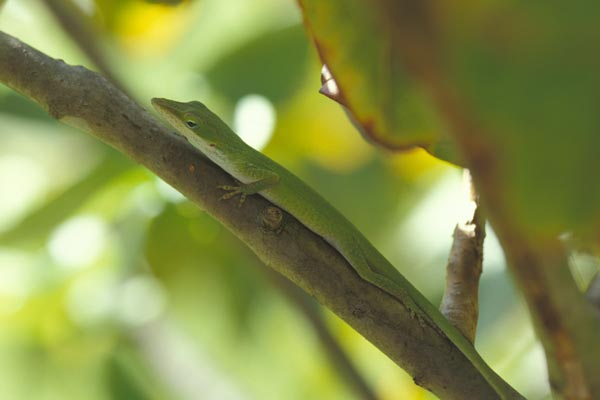
Green Anoles are the only anole species native to Florida, but they're getting harder and harder to find what with all the competition from the hardy and prolific little brown anoles. This one was in a Coral Gables backyard.
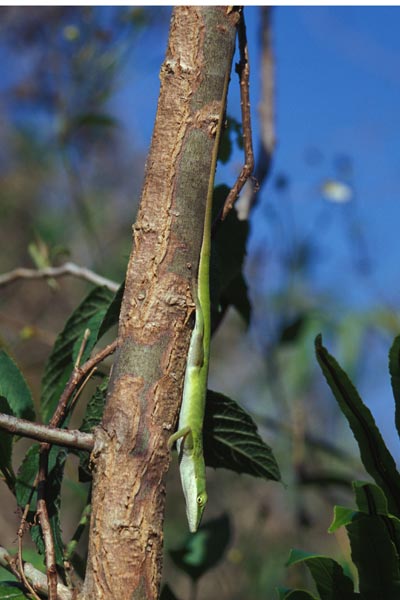
Here's another green anole in the Everglades. Green anoles are such elegant creatures.

This one is right in the middle of shedding its skin. Green anoles can turn brown, an ability that earned them the confusing misnomer "American chameleon" (they aren't chameleons; they're anoles!). Brown anoles cannot, however, turn green.
Anole expert Dr. Ann Paterson told me that a lookalike (and closely related) Cuban anole species, Anolis porcatus, has been found in south Florida and is possibly spreading. So, the pictures I have here of A. carolinensis in south Florida may really be A. porcatus instead.
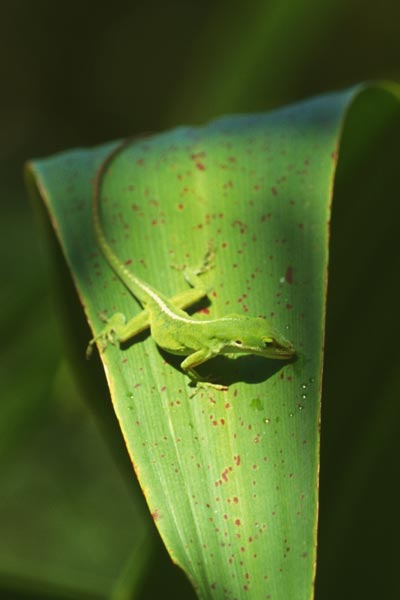
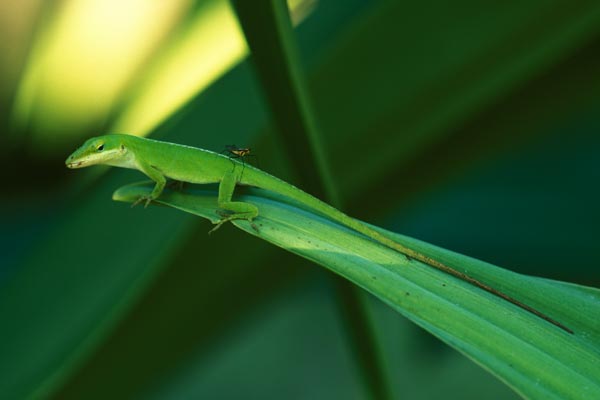
Not only does the Mauna Loa Macadamia Nut Factory have yummy chocolate-covered Macadamia nuts, but its garden area provides home for a thriving population of introduced green anoles. What more could you ask for? The one in the first picture was drinking water from the leaf's surface. The one in the second picture seems to be pondering how to snatch the tasty snack on its back.
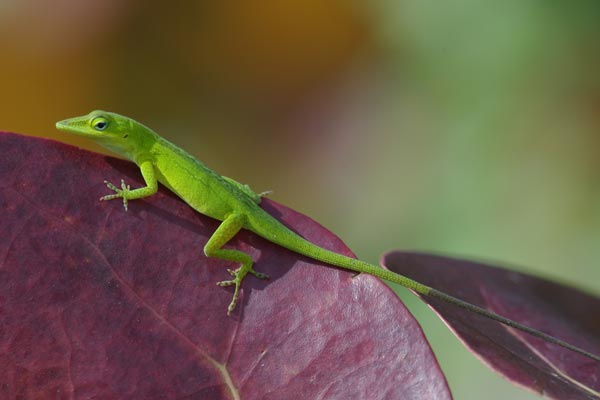
Back in Florida, here's a photogenic juvenile green anole posing on a sea grape leaf.

Most green anoles have strawberry-red dewlaps, but some populations in southwest Florida have gray or greenish dewlaps. These populations were formerly considered a separate subspecies, Anolis carolinensis seminolus, but recent genetic studies have not shown a clear relationship between these unusual dewlap colors and genetic differences. Unfortunately these anoles are just as hard to find amidst the far more plentiful Brown Anoles as their northern cousins. Here's a pretty individual from Fakahatchee Strand that had a faint row of light blue dots down its side.
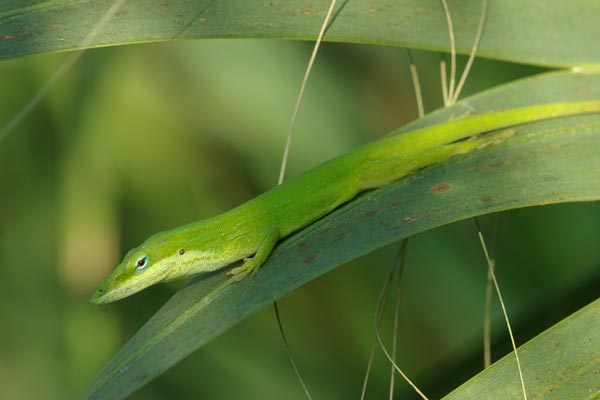
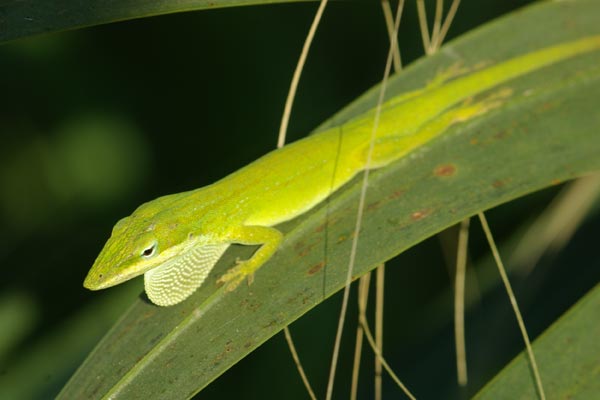
Here's one of the anoles from the populations with different dewlap colors proudly showing off his mark of distinction just for me.

You just gotta love that green-on-green camouflage.
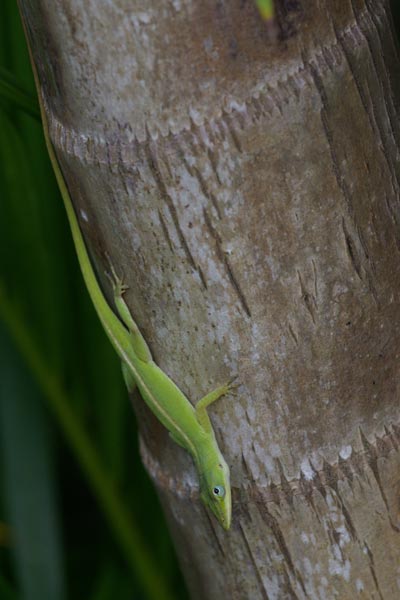
It's always nice, though unfortunately increasingly rare, to spot an actual native lizard in southern Florida, amidst all the non-native brown anoles, bark anoles, crested anoles, green iguanas, spiny-tailed iguanas, basilisks, etc.
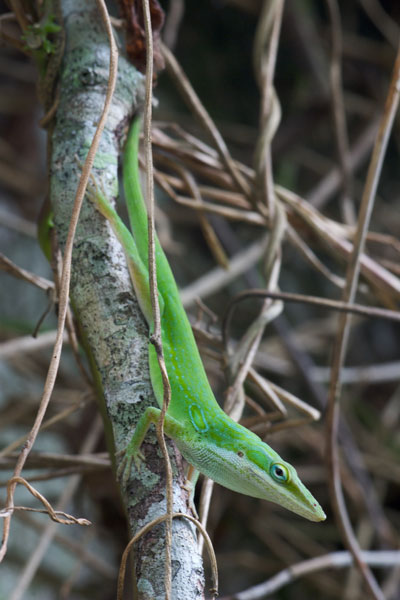
This anole had some particularly nice blue speckles on its neck and shoulders.
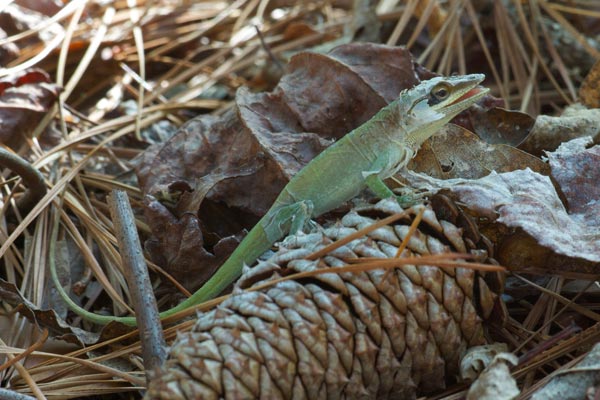
Anolis carolinensis is named after the Carolinas, so I was happy to get a chance to see a few in the Carolinas. This one might look like it lost a fight with an angry cat, but in reality it was just shedding its skin. I was interested to see that it evaded me by hopping away on the ground, rather than by running up the nearest tree as I would have expected from my experience with Floridian green anoles.
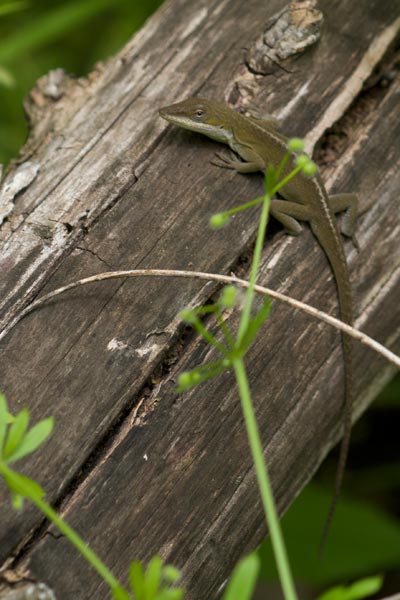
Since my wife's family lives in Florida and we live in California, we have driven through Texas several times on our way across the country. However, we have typically taken this route in the late winter, when temperatures are too low for reptiles, and even at other times we've never stopped to see the sights. That is my excuse for why this humble green anole is my first ever herp photo from Texas.

This green anole kept a careful watch on me. It joined only a handful of visible lizards on this cool day in the Everglades.

Jake Scott and I pondered this lizard for awhile, wondering whether it was A. carolinensis or the introduced lookalike A. porcatus. Some references suggest that the well-defined ocella (eye-like spot) above the front leg suggests A. porcatus, whereas others suggest that there is no way to tell the two apart short of DNA analysis, whereas others suggest that the two species should really be lumped into one. Needless to say, I did not arrive at a clear answer.
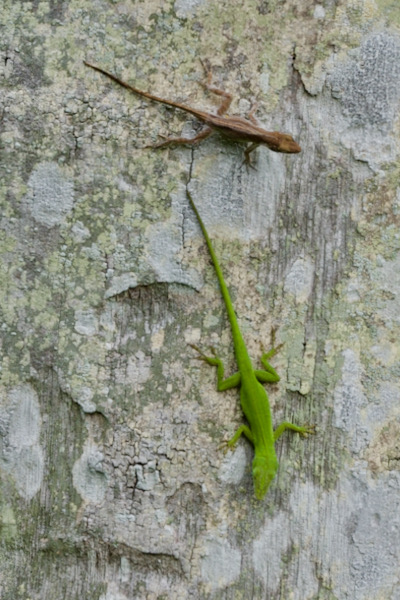
The lizard at the top is a non-native Brown Anole. Typically in South Florida the Brown Anoles have pushed the Green Anoles up higher in the vegetation, where the greenies have the advantage of being more graceful and agile. One or both of these lizards are rebels.
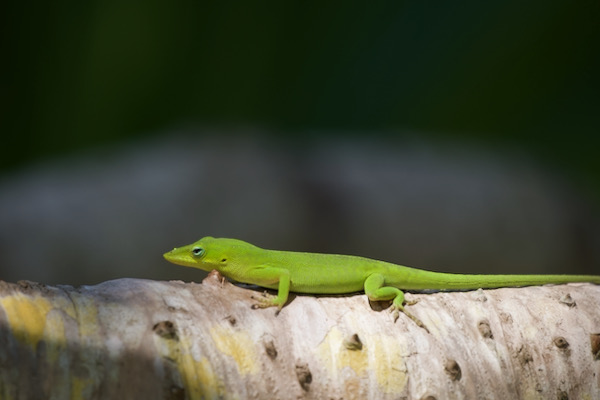

These were the two most interesting small green anoles I saw on this Florida trip. Both seemed different enough from your average Anolis carolinensis that I thought they might perhaps be one of the small green non-native Anolis species found in south Florida. But lizard experts chiming in on iNaturalist told me that these colors/patterns are within the normal variation for A. carolinensis, so that's the most likely ID.

I'm pretty sure this is the first time I've seen an anole using a dog poop bag dispenser for shelter.

I would probably not have spotted this anole in the foliage if it hadn't turned its head to eye me, thus revealing its white chin, which stood out against the leaves.

Looks comfy!
Online references:
- Anolis carolinensis account on The Reptile Database
- Read Todd Campbell's overview of the competition between green anoles and brown anoles in an Insitute for Biological Invasions Invader of the Month column.
Printed references:
- Ashton, R. E. Jr., Ashton, P. S. 1991. Handbook of Reptiles and Amphibians of Florida, Part Two: Lizards, Turtles, & Crocodilians, Revised Second Edition
- Bartlett, R. D., Bartlett, P. B. 1999. A Field Guide to Florida Reptiles and Amphibians
- Behler, J. L., King, F. W. 1979. The Audubon Society Field Guide to North American Reptiles & Amphibians
- Carmichael, P., Williams, W. 1991. Florida's Fabulous Reptiles & Amphibians
- Conant, R., Collins, J. T. 1998. Peterson Field Guide to Reptiles and Amphibians of Eastern and Central North America, Third Edition, expanded
- Crother, B. I. (ed.) 2017. Scientific and Standard English Names of Amphibians and Reptiles of North America North of Mexico, with Comments Regarding Confidence in Our Understanding, Eighth Edition
- Mckeown, S. 1996. A Field Guide to Reptiles and Amphibians in the Hawaiian Islands
- Rogner, M. 1997. Lizards
- Smith, H. M. 1995. Handbook of Lizards: Lizards of the United States and Canada
- Smith, H. M., Brodie, E. D. Jr. 1982. Reptiles of North America: A Guide to Field Identification